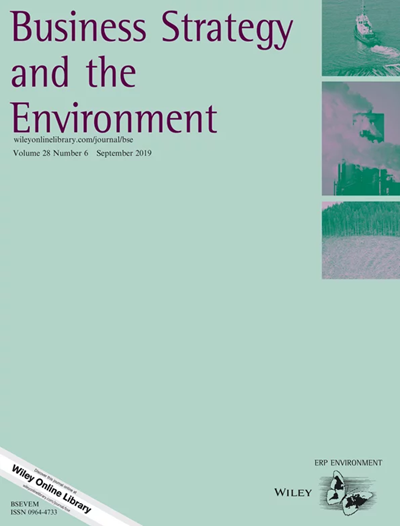评估工业4.0驱动的循环创业公司的关键成功因素:模糊AHP-DEMATEL方法
IF 12.5
1区 管理学
Q1 BUSINESS
引用次数: 0
摘要
循环经济(CE)与工业4.0 (I4.0)相结合,是学术界和工业界讨论的新兴趋势。研究表明,工业4.0支持CE,而循环创业公司(csu)是推进CE的关键参与者。然而,在I4.0驱动的csu (CSU4.0)的实证研究中存在空白。本研究采用多准则决策方法,结合模糊层次分析法(F‐AHP)和模糊决策试验与评价实验室法(F‐DEMATEL),探讨CSU4.0的关键成功因素(CSFs)。使用PRISMA方法从文献中鉴定出23个csf。F‐AHP分析发现,建立创新的循环商业模式是最重要的成功因素。F - DEMATEL分析表明,获得财政资源和获得物理基础设施是CSU4.0长期成功的关键因素。本研究旨在通过更好地理解CSU4.0的成功因素,为企业家和政策制定者的决策提供便利。本文章由计算机程序翻译,如有差异,请以英文原文为准。
Assessing Critical Success Factors for Industry 4.0‐Enabled Circular Startups: A Fuzzy AHP–DEMATEL Approach
The circular economy (CE), in conjunction with Industry 4.0 (I4.0), is an emerging trend discussed in academia and industry. Research suggests that I4.0 supports the CE, and circular startups (CSUs) are key players in advancing CE. However, there is a gap in empirical studies on I4.0‐enabled CSUs (CSU4.0). This research employs a multicriteria decision‐making methodology, incorporating the fuzzy analytic hierarchy process (F‐AHP) and fuzzy decision‐making trial and evaluation laboratory (F‐DEMATEL), to explore the critical success factors (CSFs) of CSU4.0. Twenty‐three CSFs were identified from the literature using the PRISMA method. F‐AHP analysis identified building innovative circular business models as the most important success factor. F‐DEMATEL analysis showed that access to financial resources and access to physical infrastructure are key factors for the long‐term success of CSU4.0. This study aims to facilitate decision‐making for entrepreneurs and policymakers by enabling a better understanding of the success factors of CSU4.0.
求助全文
通过发布文献求助,成功后即可免费获取论文全文。
去求助
来源期刊

Business Strategy and The Environment
Multiple-
CiteScore
22.50
自引率
19.40%
发文量
336
期刊介绍:
Business Strategy and the Environment (BSE) is a leading academic journal focused on business strategies for improving the natural environment. It publishes peer-reviewed research on various topics such as systems and standards, environmental performance, disclosure, eco-innovation, corporate environmental management tools, organizations and management, supply chains, circular economy, governance, green finance, industry sectors, and responses to climate change and other contemporary environmental issues. The journal aims to provide original contributions that enhance the understanding of sustainability in business. Its target audience includes academics, practitioners, business managers, and consultants. However, BSE does not accept papers on corporate social responsibility (CSR), as this topic is covered by its sibling journal Corporate Social Responsibility and Environmental Management. The journal is indexed in several databases and collections such as ABI/INFORM Collection, Agricultural & Environmental Science Database, BIOBASE, Emerald Management Reviews, GeoArchive, Environment Index, GEOBASE, INSPEC, Technology Collection, and Web of Science.
 求助内容:
求助内容: 应助结果提醒方式:
应助结果提醒方式:


